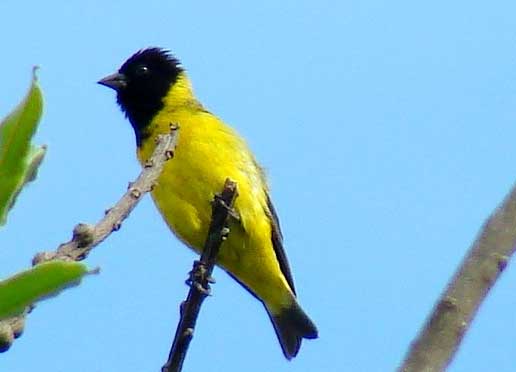
Spinus magellanicus (*)
Superregnum: Eukaryota
Cladus: Unikonta
Cladus: Opisthokonta
Cladus: Holozoa
Regnum: Animalia
Subregnum: Eumetazoa
Cladus: Bilateria
Cladus: Nephrozoa
Superphylum: Deuterostomia
Phylum: Chordata
Subphylum: Vertebrata
Infraphylum: Gnathostomata
Megaclassis: Osteichthyes
Cladus: Sarcopterygii
Cladus: Rhipidistia
Cladus: Tetrapodomorpha
Cladus: Eotetrapodiformes
Cladus: Elpistostegalia
Superclassis: Tetrapoda
Cladus: Reptiliomorpha
Cladus: Amniota
Classis: Reptilia
Cladus: Eureptilia
Cladus: Romeriida
Subclassis: Diapsida
Cladus: Sauria
Infraclassis: Archosauromorpha
Cladus: Crurotarsi
Divisio: Archosauria
Cladus: Avemetatarsalia
Cladus: Ornithodira
Subtaxon: Dinosauromorpha
Cladus: Dinosauriformes
Cladus: Dracohors
Cladus: Dinosauria
Ordo: Saurischia
Cladus: Eusaurischia
Subordo: Theropoda
Cladus: Neotheropoda
Cladus: Averostra
Cladus: Tetanurae
Cladus: Avetheropoda
Cladus: Coelurosauria
Cladus: Tyrannoraptora
Cladus: Maniraptoromorpha
Cladus: Maniraptoriformes
Cladus: Maniraptora
Cladus: Pennaraptora
Cladus: Paraves
Cladus: Eumaniraptora
Cladus: Avialae
Infraclassis: Aves
Cladus: Euavialae
Cladus: Avebrevicauda
Cladus: Pygostylia
Cladus: Ornithothoraces
Cladus: Ornithuromorpha
Cladus: Carinatae
Parvclassis: Neornithes
Cohors: Neognathae
Cladus: Neoaves
Cladus: Telluraves
Cladus: Australaves
Ordo: Passeriformes
Subordo: Passeri
Infraordo: Passerida
Superfamilia: Passeroidea
Familia: Fringillidae
Subfamilia: Carduelinae
Genus: Spinus
Species: Spinus magellanicus
Subspecies: S. m. alleni – S. m. bolivianus – S. m. capitalis – S. m. hoyi – S. m. ictericus – S. m. longirostris – S. m. magellanicus – S. m. paulus – S. m. peruanus – S. m. santaecrucis – S. m. tucumanus – S. m. urubambensis
Name
Spinus magellanicus (Vieillot, 1805)
Synonyms
Fringilla magellanica (protonym)
Carduelis magellanica (Vieillot, 1805)
Sporagra magellanica (Vieillot, 1805)
Spinus magellanica (Vieillot, 1805)
References
Vieillot, L.J.P. 1805. Histoire naturelle des plus beaux oiseaux chanteurs de la zone torride. 112 pp. + 70 tt. Dufour, Paris. BHL Reference page. p. 54 BHL pl. 30 BHL
Vernacular names
Deutsch: Magellanzeisig
English: Hooded Siskin
español: Jilguero Encapuchado
français: Chardonneret de Magellan
日本語: ズグロヒワ
português: Pintassilgo
Runa Simi: Ch'ayña
Türkçe: Kukuletalı iskete
The hooded siskin (Spinus magellanicus) is a small passerine bird in the finch family (Fringillidae), native to South America. It belongs to the putative clade of neotropical siskins in the genus Spinus sensu lato.
There are 11 subspecies, including the Santa Cruz hooded siskin (S. m. santaecrucis) of central and eastern Bolivia. This subspecies is sometimes considered to be a separate species.
Description
Hooded siskins are 10 to 14 cm in length. The male is largely green above and yellow below with a black head. It has a narrow yellow collar and a yellow rump. The tail is black with yellow sides to the base and the wings are black with a broad yellow band. Females are duller with a green-brown head, yellow-green breast and sides and a whitish belly.
The twittering song may be uttered from a perch or in flight. It is varied and fast, and may contain imitations of other birds.
Distribution and ecology
It inhabits woodland, savannas, scrubland, farmland, parks and gardens. It occurs from sea-level up to 5000 m. In eastern South America, it is found from central Argentina north to central Brazil. In the Andean region, it occurs from northwestern Argentina and northern Chile north to central Colombia. There is an isolated population in southeastern Venezuela, Guyana and the Brazilian state of Roraima.
It is commonly found in flocks, feeding in trees or bushes or on the ground. The diet consists mainly of seeds together with buds, leaves and some insects. Geophagy has been observed in this species.[2]
Phylogeny
The hooded siskin is part of a recent and rapid adaptive radiation of Spinus finches in South America.[3]
Antonio Arnaiz-Villena et al. originally placed this species as a sister taxon to the yellow-faced siskin (S. yarrellii) using genetic material sourced from birds in the Argentine lowlands, in the southeastern portion of the bird's range.[4] Subsequent work by Elizabeth Beckman and Christopher Witt demonstrated that birds from the Andes in the northwestern portion of the range were more closely related to the thick-billed siskin (S. crassirostris) and that hooded siskin is therefore polyphyletic and includes at least two species.[3]
References
BirdLife International (2016). "Spinus magellanicus". IUCN Red List of Threatened Species. 2016: e.T22720383A94667451. doi:10.2305/IUCN.UK.2016-3.RLTS.T22720383A94667451.en. Retrieved 12 November 2021.
Delgado-V. (2006)
Beckman, Elizabeth J.; Witt, Christopher C. (2015-06-01). "Phylogeny and biogeography of the New World siskins and goldfinches: Rapid, recent diversification in the Central Andes". Molecular Phylogenetics and Evolution. 87: 28–45. doi:10.1016/j.ympev.2015.03.005. ISSN 1055-7903. PMID 25796324.
Arnaiz-Villena, A.; Álvarez-Tejado, M.; Ruíz-del-Valle, V.; García-de-la-Torre, C.; Varela, P.; Recio, M. J.; Ferre, S.; Martínez-Laso, J. (September 1998). "Phylogeny and rapid Northern and Southern Hemisphere speciation of goldfinches during the Miocene and Pliocene Epochs". Cellular and Molecular Life Sciences. 54 (9): 1031–1041. doi:10.1007/s000180050230. ISSN 1420-682X. PMID 9791543. S2CID 10654775.
Zamora J, Moscoso J, Ruiz-del-Valle V, Ernesto L, Serrano-Vela JI, Ira-Cachafeiro J, Arnaiz-Villena A (2006). "Conjoint mitochondrial phylogenetic trees for canaries Serinus spp. and goldfinches Carduelis spp. show several specific polytomies"(PDF). Ardeola 53(1): 1-17.
Retrieved from "http://en.wikipedia.org/"
All text is available under the terms of the GNU Free Documentation License

